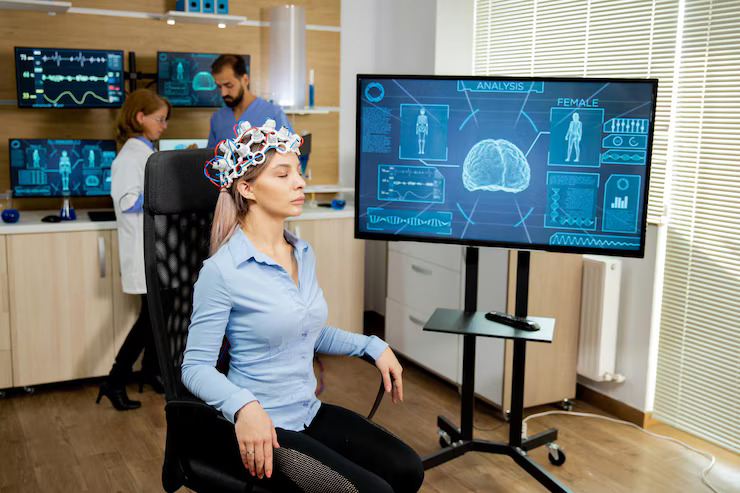As biomedical research evolves, the need for more nuanced, layered, and precise data interpretation is rapidly growing. This is where the spatiotemporal omics market becomes important. It combines spatial and temporal biological data. This helps map molecular activities in specific places and times within organisms.
The Spatiotemporal Omics Market is rapidly transforming the landscape of life sciences by enabling scientists to map molecular changes across time and space within biological systems. With increasing applications in precision medicine, drug discovery, and developmental biology, this emerging domain is gaining traction among researchers and commercial entities alike.
What is Spatiotemporal Omics?
Spatiotemporal omics means combining spatial biology with time-series data. This data comes from different omics layers: genomics, transcriptomics, proteomics, and metabolomics. The goal is to understand how molecular mechanisms work in both space and time. This is particularly powerful for applications such as cancer research, neuroscience, developmental biology, and immunology.
Frequently Asked Questions (FAQs) About Omics and Spatiotemporal Technologies
What Are the Problems with Omics?
While omics technologies offer high-resolution data, they also pose challenges:
- High cost of data generation
- Data standardization and reproducibility
- Integration and interpretation of large, complex datasets
- Privacy and ethical concerns in human omics data
What Are the Four Major Omics?
- Genomics – Study of the entire genome
- Transcriptomics – Study of RNA transcripts
- Proteomics – Study of protein expressions
- Metabolomics – Study of metabolic profiles
These serve as the foundation for multi-omics approaches.
Key Drivers of Market Growth
- Rising Demand for Precision Medicine: As healthcare moves toward individualized treatment plans, the need for high-resolution molecular data is increasing.
- Advancements in Imaging and Sequencing: Technologies such as MERFISH (Multiplexed Error-Robust Fluorescence In Situ Hybridization) and spatial transcriptomics are improving accuracy and scalability.
- Growing Investments: Government and private funding for advanced biomedical research continues to accelerate the development of spatial and temporal omics platforms.
See What’s Inside Before You Decide
Download a complimentary sample report and discover the depth of research and analysis on Spatiotemporal Omics Market – A Global and Regional Analysis 2025-2035
Applications of Spatiotemporal Omics
- Cancer Research: Understand tumor microenvironments at the single-cell level.
- Neurological Disorders: Analyze spatial expression in brain tissues to decode complex neurodegenerative diseases.
- Developmental Biology: Trace lineage and cell differentiation during embryogenesis.
Key Players
Some notable companies and research initiatives involved in this field include:
- 10x Genomics
- NanoString Technologies
- Vizgen
- Bruker Corporation
- Research collaborations with institutions like Harvard, MIT, and the NIH
What is the Difference Between Omics and Genomics?
Genomics is a subset of omics. While genomics focuses on the genome, omics encompasses a broader scope including transcriptomics, proteomics, and metabolomics.
What Are Examples of Omics Technologies?
- Next-Generation Sequencing (NGS)
- Mass Spectrometry (MS)
- Single-Cell RNA Sequencing (scRNA-seq)
- MERFISH (Multiplexed Error-Robust Fluorescence In Situ Hybridization)
What is AWS Omics?
AWS Omics is a cloud solution from Amazon Web Services. It helps store, query, and analyze genomic and multi-omics data. This makes research workflows easier and more scalable.
Understanding Spatial and Temporal Dimensions
What is Spatial Omics?
Spatial omics techniques provide molecular information mapped to the precise location within a tissue. Technologies include:
- Spatial transcriptomics
- Imaging mass cytometry
- MERFISH
- GeoMx Digital Spatial Profiler
What is the Temporal Domain?
The temporal domain refers to changes in molecular activity over time. This is crucial for studying disease progression or drug response.
The Future of Spatiotemporal Omics
Why Is Multi-Omics the Future of Biological Analysis?
By integrating multiple layers of biological data across time and space, researchers can uncover complex mechanisms driving health and disease with unprecedented resolution.
What Are the High-Throughput Omics Technologies?
- RNA-seq
- Mass spectrometry-based proteomics
- Single-cell sequencing platforms
- Spatial transcriptomics chips
What is Pan-Omics?
Pan-omics means looking at all types of omics data from one sample or study at the same time. This gives a complete view of biological information.
What Is the Translational Omics Program?
Programs run by institutions like the NIH aim to connect omics research with clinical use. They work to turn findings into diagnostics or therapies.
Market Insights
The spatiotemporal omics market is growing quickly. This growth comes from new technology.
There is also more money in precision medicine. Additionally, there is a higher demand for single-cell and spatial analysis tools. North America currently dominates, but Asia-Pacific is emerging due to increasing R&D and genomic initiatives.
Conclusion
Spatiotemporal omics is revolutionizing biomedical research, offering layered and contextualized insights that traditional approaches cannot. Despite challenges, the integration of spatial and temporal omics holds immense promise in transforming diagnostics, therapeutics, and our fundamental understanding of biology.
As researchers continue to explore the complexities of biological systems, the integration of spatiotemporal omics is proving to be a game-changer. By examining how genes and proteins behave in specific locations and at particular times, scientists can uncover intricate patterns that were previously hidden. This better understanding can create more accurate disease models. This helps in developing targeted therapies for individual patients.



